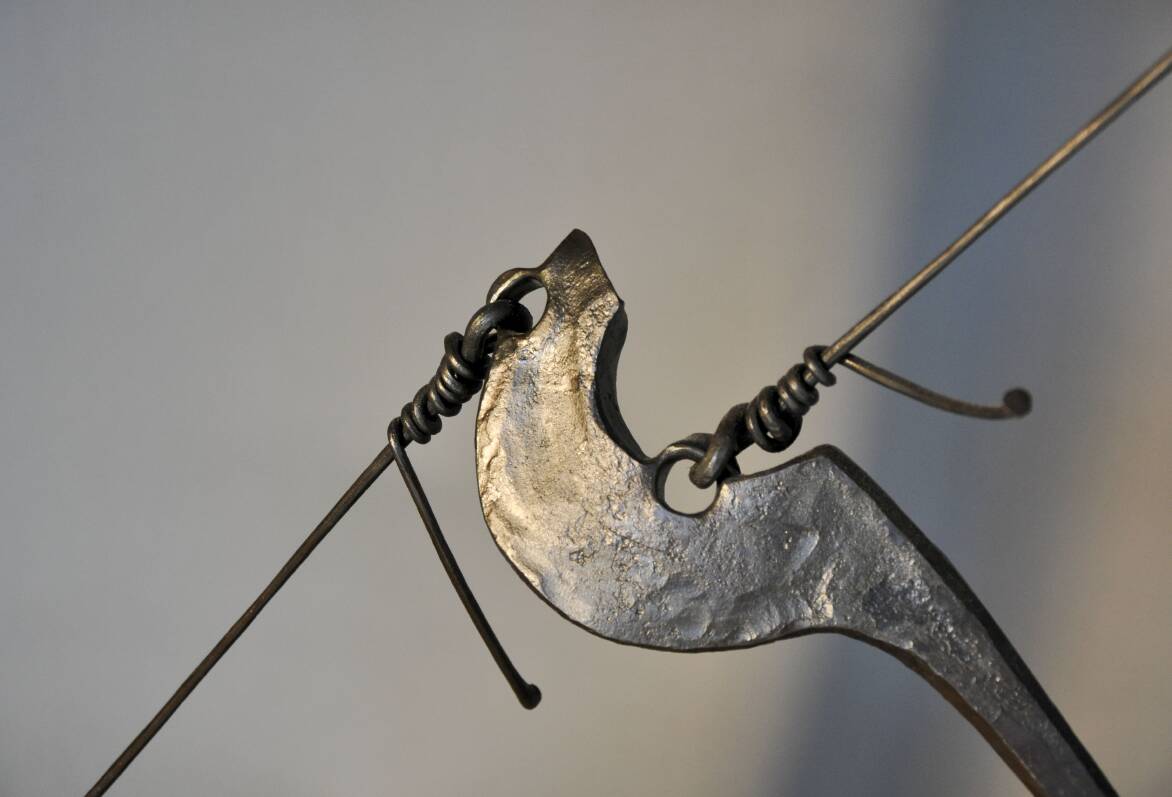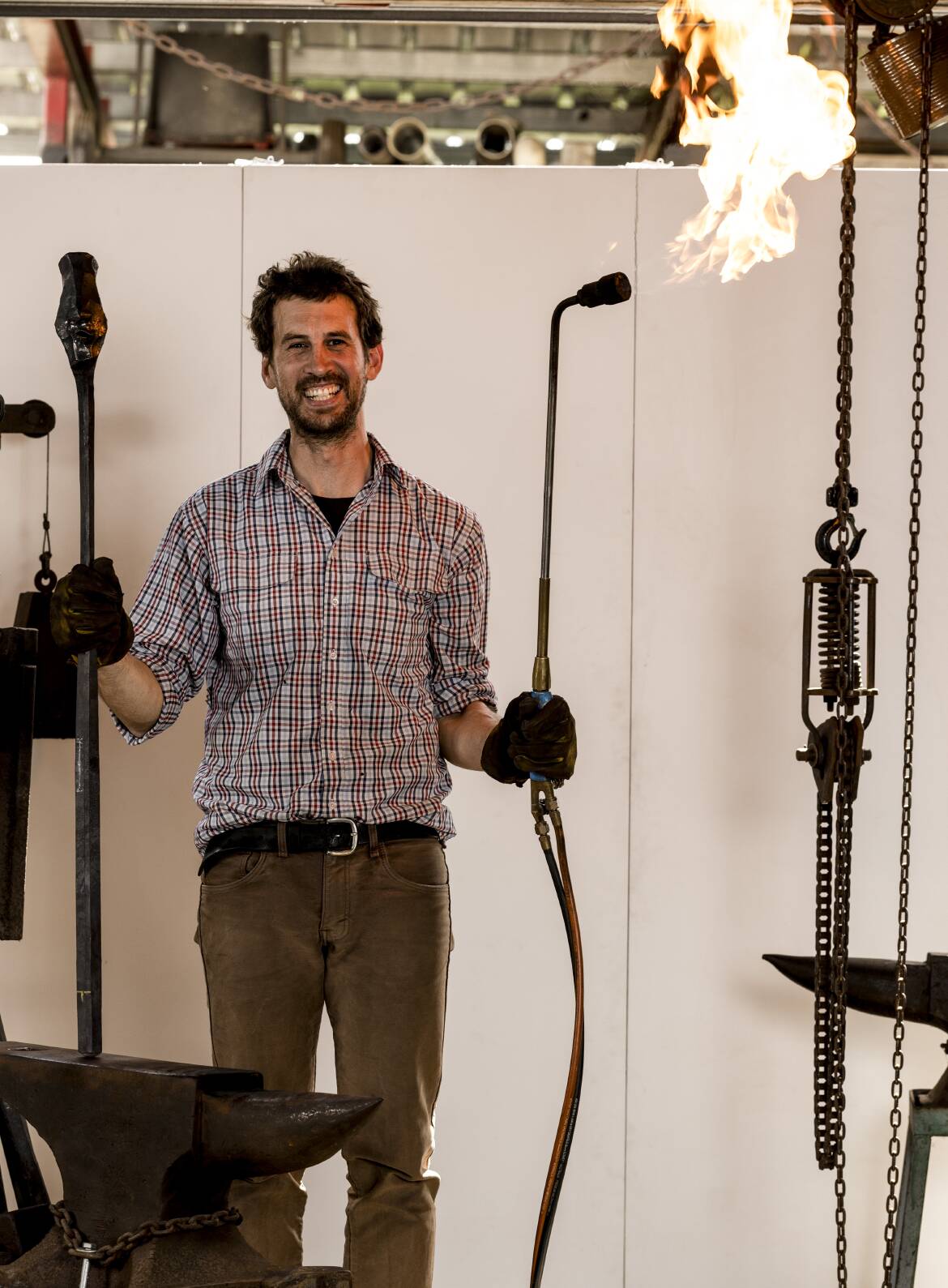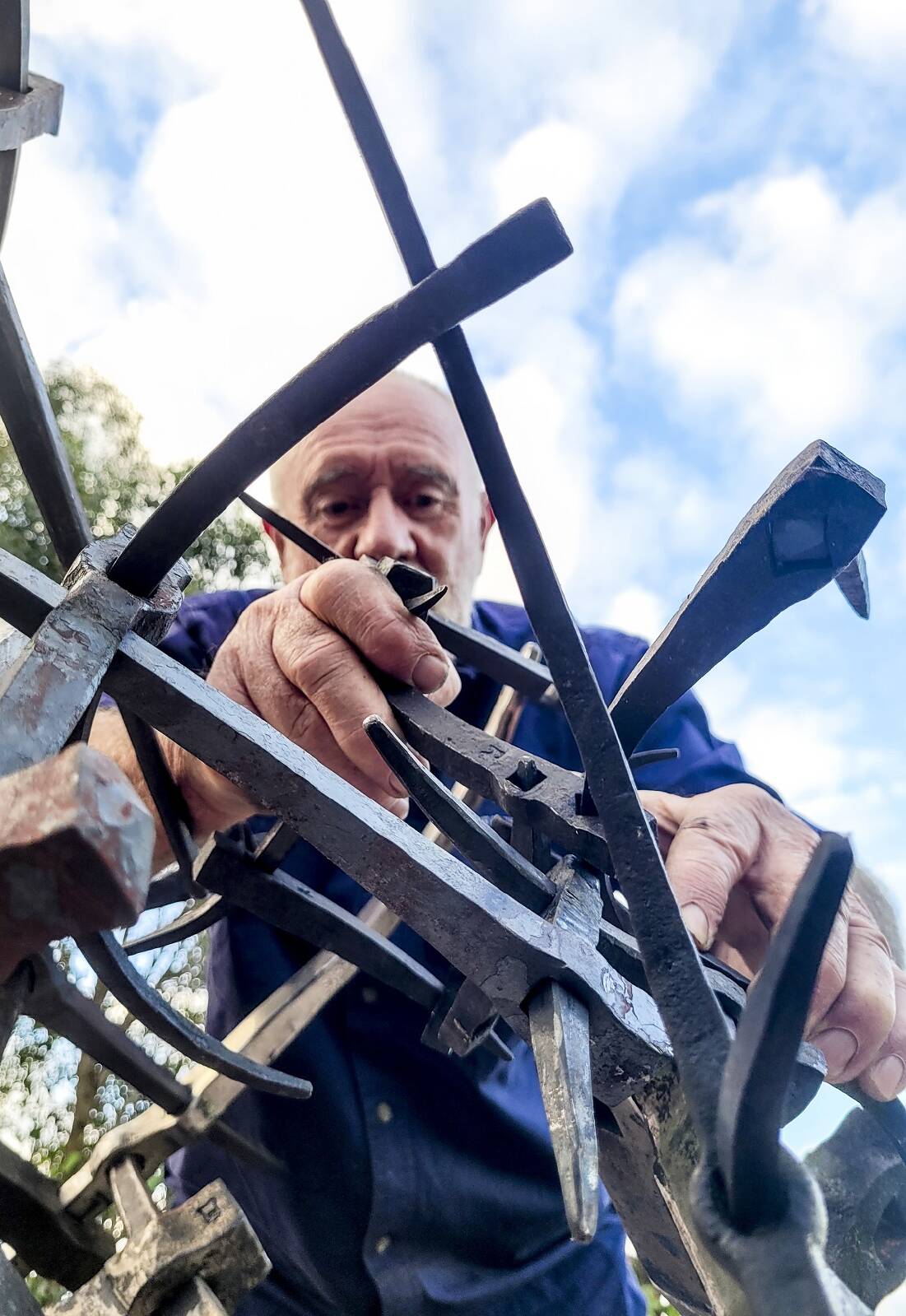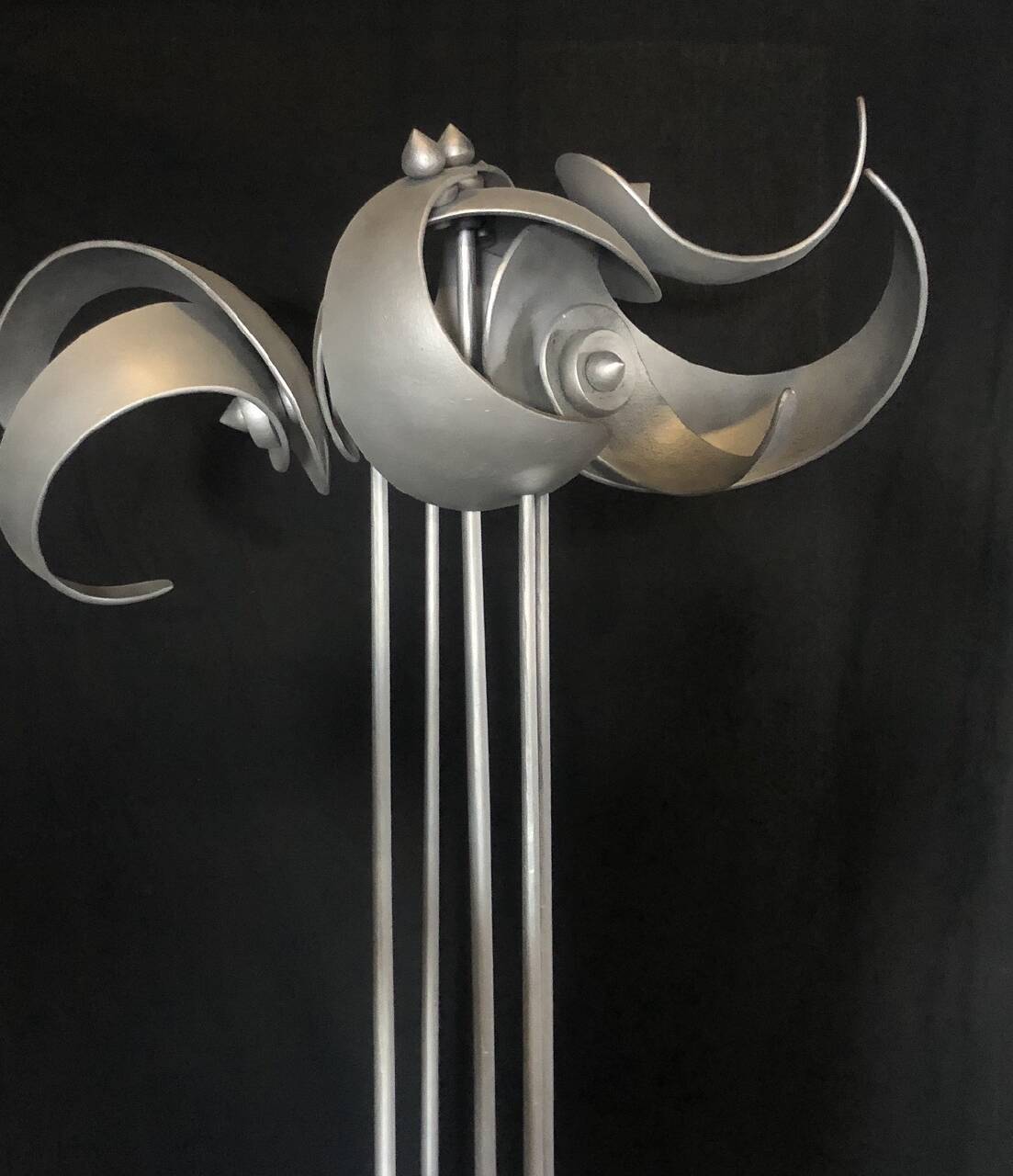



Branxton blacksmith Will Maguire is proud to be an organiser of Australia's first National Blacksmith Survey exhibition, now on show at The Glasshouse in Port Macquarie.
Maguire began his apprenticeship in 2002, but has never looked back. Making a career out of the trade, mostly through his artistic vision and design.
His public art pieces are spread widely, including a major work in the foyer of the new Maitland Town Hall complex. His private sculpture works are also held widely.
Beyond that, he also does custom-designed, architectural line work, often railings, furniture, or lighting for private homes.
In his modest way, he says, "It's a bit of a constant struggle... but I get by. I can't complain."

Maguire says he recently installed a railing he made for a home in Marrickville in Sydney. "I did one eight years ago for the same client," he says. "This is an extension. She's into ecology, regeneration. She has a lovely house, full of natives, lets it goes wild. The railing reflects her a bit. I'm always trying to find that balance between what makes me happy and what makes the client happy I suppose."
National Blacksmith Survey exhibition
The show at Port Macquarie, organised under the auspices of the Artist Blacksmiths Association of NSW, features 35 works by 28 blacksmiths (including five women), Maguire says. "It's quite divers, from abstract art to axes, tools," he says.
Among the blacksmiths represented are Mat Newburn from Eveleigh Works in Sydney, Julian Suitor from Braidwood in the Southern Highlands, John Wood from Wagga, Chris Fuller in South Australia and well-known Tasmanians Ben Beams and Pete Mattila.
The show is a tribute to the craft of blacksmithing, which has always been low profile among artisan crafts in Australia, according to Maguire (who also holds a degree in philosophy).
"It was a craft tradition that wasn't noticed by anyone," he says. "There was glass, pottery, timberwork - heaps of wonderful makers doing interesting things. I think blacksmithing is not as visible as that."

In Australia, it came from the colonial era, and then it was very focused on very practical concerns, like farm-type blacksmithing. And traditional decorative ironwork based on English traditions, found in some of Australia's oldest churches.
"But it's not that common, and it is very traditional, in a European sense," he says of how the craft was regarded in Australia. "Blacksmithing sort of died out during industrial revolution. Mass production stripped out the need."
But then came a resurgence, first in America, then flowing to England, and Europe. It's still a viable career in Germany and France, and some of the leading work these days is found in places like the Czech Republic, Ukraine, Russia and Japan.

The nearest blacksmithing course is on the TAFE campus at Ultimo in the heart of Sydney.
Many contemporary Australian blacksmiths have improved their skills by travelling, Maguire says. He calls it learning by "journeymanship".
"You go travelling, get taken in, it's quite a wonderful community globally," he says, "and opens all these doors. That's how I went to Russia. You can jump around, and you are welcomed.
"I haven't hosted anyone since COVID. I've had half a dozen stay with me, and work with me. Some hung around for months."







